-
Executive Summary
-
Market Introduction
-
Market Definition
-
Scope of the Study
-
Market Structure
-
Research Methodology
-
Primary Research
-
Secondary Research
-
Market Size Estimation
-
Forecast Model
-
List of Assumptions
-
Limitations of the Study
-
Market Insights
-
Market Dynamics
-
Introduction
-
Market Drivers
-
Market Restraints
-
Market Opportunities
-
Porter’s Five Forces Analysis
- Threat of New Entrants
- Bargaining Power of Buyers
- Bargaining Power of Suppliers
- Threat of Substitutes
- Intensity of Rivalry
-
Value Chain/Supply Chain Analysis
-
Global Valve Remote Control System Market, by Type
-
Introduction
-
Hydraulic
- Market Estimates & Forecast, 2020–2027
- Market Estimates & Forecast, by Region, 2020–2027
-
Pneumatic
- Market Estimates & Forecast, 2020–2027
- Market Estimates & Forecast, by Region, 2020–2027
-
Electric
- Market Estimates & Forecast, 2020–2027
- Market Estimates & Forecast, by Region, 2020–2027
-
Electro-Hydraulic
- Market Estimates & Forecast, 2020–2027
- Market Estimates & Forecast, by Region, 2020–2027
-
Global Valve Remote Control System Market, by Valve Type
-
Introduction
-
Ball
- Market Estimates & Forecast, 2020–2027
- Market Estimates & Forecast, by Region, 2020–2027
-
Globe
- Market Estimates & Forecast, 2020–2027
- Market Estimates & Forecast, by Region, 2020–2027
-
Butterfly
- Market Estimates & Forecast, 2020–2027
- Market Estimates & Forecast, by Region, 2020–2027
-
Gate
- Market Estimates & Forecast, 2020–2027
- Market Estimates & Forecast, by Region, 2020–2027
-
Diaphragm
- Market Estimates & Forecast, 2020–2027
- Market Estimates & Forecast, by Region, 2020–2027
-
Plug
- Market Estimates & Forecast, 2020–2027
- Market Estimates & Forecast, by Region, 2020–2027
-
Check
- Market Estimates & Forecast, 2020–2027
- Market Estimates & Forecast, by Region, 2020–2027
-
Safety
- Market Estimates & Forecast, 2020–2027
- Market Estimates & Forecast, by Region, 2020–2027
-
Global Valve Remote Control System Market, by Application
-
Introduction
-
Marine
- Market Estimates & Forecast, 2020–2027
- Market Estimates & Forecast, by Region, 2020–2027
-
Offshore
- Market Estimates & Forecast, 2020–2027
- Market Estimates & Forecast, by Region, 2020–2027
-
Others
- Market Estimates & Forecast, 2020–2027
- Market Estimates & Forecast, by Region, 2020–2027
-
Global Valve Remote Control System Market, by Region
-
Introduction
-
North America
- Market Estimates & Forecast, by Type, 2020–2027
- Market Estimates & Forecast, by Valve Type, 2020–2027
- Market Estimates & Forecast, by Application, 2020–2027
- Market Estimates & Forecast, by Country, 2020–2027
- US
- Canada
- Mexico
-
Europe
- Market Estimates & Forecast, by Type, 2020–2027
- Market Estimates & Forecast, by Valve Type, 2020–2027
- Market Estimates & Forecast, by Application, 2020–2027
- Market Estimates & Forecast, by Country, 2020–2027
- Russia
- UK
- Norway
- Italy
- Rest of Europe
-
Asia-Pacific
- Market Estimates & Forecast, by Type, 2020–2027
- Market Estimates & Forecast, by Valve Type, 2020–2027
- Market Estimates & Forecast, by Application, 2020–2027
- Market Estimates & Forecast, by Country, 2020–2027
- China
- Japan
- India
- Indonesia
- Rest of Asia-Pacific
-
Middle East & Africa
- Market Estimates & Forecast, by Type, 2020–2027
- Market Estimates & Forecast, by Valve Type, 2020–2027
- Market Estimates & Forecast, by Application, 2020–2027
- Market Estimates & Forecast, by Country, 2020–2027
- Saudi Arabia
- UAE
- Angola
- Nigeria
- Rest of the Middle East & Africa
-
South America
- Market Estimates & Forecast, by Type, 2020–2027
- Market Estimates & Forecast, by Valve Type, 2020–2027
- Market Estimates & Forecast, by Application, 2020–2027
- Market Estimates & Forecast, by Country, 2020–2027
- Brazil
- Argentina
- Rest of South America
-
Competitive Landscape
-
Competitive Scenario
-
Competitive Benchmarking of the Global Valve Remote Control System Market
-
Major Growth Key Strategies in the Global Valve Remote Control System Market
-
Market Share Analysis: Global Valve Remote Control System Market
-
Wartsila: The Leading Player in Terms of Number of Developments in Global Valve Remote Control System Market
-
New Product Development in Valve Remote Control System Market
-
Mergers & Acquisitions in Valve Remote Control System Market
-
Contracts & Agreements in Valve Remote Control System Market
-
Expansions & Investments in Valve Remote Control System Market
-
Company Profile
-
Wartsila
- Company Overview
- Product/Services Offered
- Financial Overview
- Key Developments
- Key Strategies
- SWOT Analysis
-
Emerson
- Company Overview
- Product /Services Offered
- Financial Overview
- Key Developments
- Key Strategies
- SWOT Analysis
-
KSB
- Company Overview
- Product /Services Offered
- Financial Overview
- Key Developments
- Key Strategies
- SWOT Analysis
-
Nordic Group
- Company Overview
- Product /Services Offered
- Financial Overview
- Key Developments
- Key Strategies
- SWOT Analysis
-
Danuni Marine
- Company Overview
- Product /Services Offered
- Financial Overview
- Key Developments
- Key Strategies
- SWOT Analysis
-
Rotork
- Company Overview
- Product /Services Offered
- Financial Overview
- Key Developments
- Key Strategies
- SWOT Analysis
-
Cyclotech
- Company Overview
- Product /Services Offered
- Financial Overview
- Key Developments
- Key Strategies
- SWOT Analysis
-
Scana
- Company Overview
- Product /Services Offered
- Financial Overview
- Key Developments
- Key Strategies
- SWOT Analysis
-
Selma
- Company Overview
- Product /Services Offered
- Financial Overview
- Key Developments
- Key Strategies
- SWOT Analysis
-
Honeywell
- Company Overview
- Product /Services Offered
- Financial Overview
- Key Developments
- Key Strategies
- SWOT Analysis
-
Greatec
- Company Overview
- Product /Services Offered
- Financial Overview
- Key Developments
- Key Strategies
- SWOT Analysis
-
-
List of Tables
-
Global Valve Remote Control System Market, by Region, 2020–2027 (USD Million)
-
North America Valve Remote Control System Market, by Country, 2020–2027 (USD Million)
-
Europe Valve Remote Control System Market, by Country, 2020–2027 (USD Million)
-
Asia-Pacific Valve Remote Control System Market, by Country, 2020–2027 (USD Million)
-
Middle East & Africa Valve Remote Control System Market, by Country, 2020–2027 (USD Million)
-
South America Valve Remote Control System Market, by Country, 2020–2027 (USD Million)
-
Global Valve Remote Control System Market, by Type, 2020–2027 (USD Million)
-
North America Valve Remote Control System Market, by Type, 2020–2027 (USD Million)
-
Europe Valve Remote Control System Market, by Type, 2020–2027 (USD Million)
-
Asia-Pacific Valve Remote Control System Market, by Type, 2020–2027 (USD Million)
-
Middle East & Africa Valve Remote Control System Market, by Type, 2020–2027 (USD Million)
-
South America Valve Remote Control System Market, by Type, 2020–2027 (USD Million)
-
Global Valve Remote Control System Market, by Valve Type, 2020–2027 (USD Million)
-
North America Valve Remote Control System Market, by Valve Type, 2020–2027 (USD Million)
-
Europe Valve Remote Control System Market, by Valve Type, 2020–2027 (USD Million)
-
Asia-Pacific Valve Remote Control System Market, by Valve Type, 2020–2027 (USD Million)
-
Middle East & Africa Valve Remote Control System Market, by Valve Type, 2020–2027 (USD Million)
-
South America Valve Remote Control System Market, by Valve Type, 2020–2027 (USD Million)
-
Global Valve Remote Control System Market, by Application, 2020–2027 (USD Million)
-
North America Valve Remote Control System Market, by Application, 2020–2027 (USD Million)
-
Europe Valve Remote Control System Market, by Application, 2020–2027 (USD Million)
-
Asia-Pacific Valve Remote Control System Market, by Application, 2020–2027 (USD Million)
-
Middle East & Africa Valve Remote Control System Market, by Application, 2020–2027 (USD Million)
-
South America Valve Remote Control System Market, by Application, 2020–2027 (USD Million)
-
Global Valve Remote Control System Market: by Region, 2020–2027 (USD Million)
-
North America Valve Remote Control System Market, by Country, 2020–2027 (USD Million)
-
North America Valve Remote Control System Market, by Type, 2020–2027 (USD Million)
-
North America Valve Remote Control System Market, by Valve Type, 2020–2027 (USD Million)
-
North America Valve Remote Control System Market, by Application, 2020–2027 (USD Million)
-
US Valve Remote Control System Market, by Type, 2020–2027 (USD Million)
-
US Valve Remote Control System Market, by Valve Type, 2020–2027 (USD Million)
-
US Valve Remote Control System Market, by Application, 2020–2027 (USD Million)
-
Canada Valve Remote Control System Market, by Type, 2020–2027 (USD Million)
-
Canada Valve Remote Control System Market, by Valve Type, 2020–2027 (USD Million)
-
Canada Valve Remote Control System Market, by Application, 2020–2027 (USD Million)
-
Mexico Valve Remote Control System Market, by Type, 2020–2027 (USD Million)
-
Mexico Valve Remote Control System Market, by Valve Type, 2020–2027 (USD Million)
-
Mexico Valve Remote Control System Market, by Application, 2020–2027 (USD Million)
-
Europe Valve Remote Control System Market, by Country, 2020–2027 (USD Million)
-
Europe Valve Remote Control System Market, by Type, 2020–2027 (USD Million)
-
Europe Valve Remote Control System Market, by Valve Type, 2020–2027 (USD Million)
-
Europe Valve Remote Control System Market, by Application, 2020–2027 (USD Million)
-
Russia Valve Remote Control System Market, by Type, 2020–2027 (USD Million)
-
Russia Valve Remote Control System Market, by Valve Type, 2020–2027 (USD Million)
-
Russia Valve Remote Control System Market, by Application, 2020–2027 (USD Million)
-
UK Valve Remote Control System Market, by Type, 2020–2027 (USD Million)
-
UK Valve Remote Control System Market, by Valve Type, 2020–2027 (USD Million)
-
UK Valve Remote Control System Market, by Application, 2020–2027 (USD Million)
-
Norway Valve Remote Control System Market, by Type, 2020–2027 (USD Million)
-
Norway Valve Remote Control System Market, by Valve Type, 2020–2027 (USD Million)
-
Norway Valve Remote Control System Market, by Application, 2020–2027 (USD Million)
-
Italy Valve Remote Control System Market, by Type, 2020–2027 (USD Million)
-
Italy Valve Remote Control System Market, by Valve Type, 2020–2027 (USD Million)
-
Italy Valve Remote Control System Market, by Application, 2020–2027 (USD Million)
-
Rest of Europe Valve Remote Control System Market, by Type, 2020–2027 (USD Million)
-
Rest of Europe Valve Remote Control System Market, by Valve Type, 2020–2027 (USD Million)
-
Rest of Europe Valve Remote Control System Market, by Application, 2020–2027 (USD Million)
-
Asia-Pacific Valve Remote Control System Market, by Country, 2020–2027 (USD Million)
-
Asia-Pacific Valve Remote Control System Market, by Type, 2020–2027 (USD Million)
-
Asia-Pacific Valve Remote Control System Market, by Valve Type, 2020–2027 (USD Million)
-
Asia-Pacific Valve Remote Control System Market, by Application, 2020–2027 (USD Million)
-
China Valve Remote Control System Market, by Type, 2020–2027 (USD Million)
-
China Valve Remote Control System Market, by Valve Type, 2020–2027 (USD Million)
-
China Valve Remote Control System Market, by Application, 2020–2027 (USD Million)
-
Japan Valve Remote Control System Market, by Type, 2020–2027 (USD Million)
-
Japan Valve Remote Control System Market, by Valve Type, 2020–2027 (USD Million)
-
Japan Valve Remote Control System Market, by Application, 2020–2027 (USD Million)
-
India Valve Remote Control System Market, by Type, 2020–2027 (USD Million)
-
India Valve Remote Control System Market, by Valve Type, 2020–2027 (USD Million)
-
India Valve Remote Control System Market, by Application, 2020–2027 (USD Million)
-
Indonesia Valve Remote Control System Market, by Type, 2020–2027 (USD Million)
-
Indonesia Valve Remote Control System Market, by Valve Type, 2020–2027 (USD Million)
-
Indonesia Valve Remote Control System Market, by Application, 2020–2027 (USD Million)
-
Rest of Asia-Pacific Valve Remote Control System Market, by Type, 2020–2027 (USD Million)
-
Rest of Asia-Pacific Valve Remote Control System Market, by Valve Type, 2020–2027 (USD Million)
-
Rest of Asia-Pacific Valve Remote Control System Market, by Application, 2020–2027 (USD Million)
-
Middle East & Africa Valve Remote Control System Market, by Country, 2020–2027 (USD Million)
-
Middle East & Africa Valve Remote Control System Market, by Type, 2020–2027 (USD Million)
-
Middle East & Africa Valve Remote Control System Market, by Valve Type, 2020–2027 (USD Million)
-
Middle East & Africa Valve Remote Control System Market, by Application, 2020–2027 (USD Million)
-
Saudi Arabia Valve Remote Control System Market, by Type, 2020–2027 (USD Million)
-
Saudi Arabia Valve Remote Control System Market, by Valve Type, 2020–2027 (USD Million)
-
Saudi Arabia Valve Remote Control System Market, by Application, 2020–2027 (USD Million)
-
UAE Valve Remote Control System Market, by Type, 2020–2027 (USD Million)
-
UAE Valve Remote Control System Market, by Valve Type, 2020–2027 (USD Million)
-
UAE Valve Remote Control System Market, by Application, 2020–2027 (USD Million)
-
Angola Valve Remote Control System Market, by Type, 2020–2027 (USD Million)
-
Angola Valve Remote Control System Market, by Valve Type, 2020–2027 (USD Million)
-
Angola Valve Remote Control System Market, by Application, 2020–2027 (USD Million)
-
Nigeria Valve Remote Control System Market, by Type, 2020–2027 (USD Million)
-
Nigeria Valve Remote Control System Market, by Valve Type, 2020–2027 (USD Million)
-
Nigeria Valve Remote Control System Market, by Application, 2020–2027 (USD Million)
-
Rest of the Middle East & Africa Valve Remote Control System Market, by Type, 2020–2027 (USD Million)
-
Rest of the Middle East & Africa Valve Remote Control System Market, by Valve Type, 2020–2027 (USD Million)
-
Rest of the Middle East & Africa Valve Remote Control System Market, by Application, 2020–2027 (USD Million)
-
South America Valve Remote Control System Market, by Country, 2020–2027 (USD Million)
-
South America Valve Remote Control System Market, by Type, 2020–2027 (USD Million)
-
South America Valve Remote Control System Market, by Valve Type, 2020–2027 (USD Million)
-
South America Valve Remote Control System Market, by Application, 2020–2027 (USD Million)
-
Brazil Valve Remote Control System Market, by Type, 2020–2027 (USD Million)
-
Brazil Valve Remote Control System Market, by Valve Type, 2020–2027 (USD Million)
-
Brazil Valve Remote Control System Market, by Application, 2020–2027 (USD Million)
-
Argentina Valve Remote Control System Market, by Type, 2020–2027 (USD Million)
-
Argentina Valve Remote Control System Market, by Valve Type, 2020–2027 (USD Million)
-
Argentina Valve Remote Control System Market, by Application, 2020–2027 (USD Million)
-
Rest of South America Valve Remote Control System Market, by Type, 2020–2027 (USD Million)
-
Rest of South America Valve Remote Control System Market, by Valve Type, 2020–2027 (USD Million)
-
Rest of South America Valve Remote Control System Market, by Application, 2020–2027 (USD Million)
-
-
List of Figures
-
Research Process Of MRFR
-
Top-Down And Bottom-Up Approach
-
Market Dynamics
-
Impact Analysis: Market Drivers
-
Impact Analysis: Market Restraints
-
Porter’s Five Forces Analysis
-
Value Chain Analysis
-
Global Valve Remote Control System Market Share, by Type, 2020 (%)
-
Global Valve Remote Control System Market, by Type, 2020–2027 (USD Million)
-
Global Valve Remote Control System Market Share, by Valve Type, 2020 (%)
-
Global Valve Remote Control System Market, by Valve Type, 2020–2027 (USD Million)
-
Global Valve Remote Control System Market Share, by Application, 2020 (%)
-
Global Valve Remote Control System Market, by Application, 2020–2027 (USD Million)
-
Global Valve Remote Control System Market Share (%), by Region, 2020
-
Global Valve Remote Control System Market, by Region, 2020–2027 (USD Million)
-
North America Valve Remote Control System Market Share (%), 2020
-
North America Valve Remote Control System Market, by Country, 2020–2027(USD Million)
-
Europe Valve Remote Control System Market Share (%), 2020
-
Europe Valve Remote Control System Market, by Country, 2020–2027 (USD Million)
-
Asia-Pacific Valve Remote Control System Market Share (%), 2020
-
Asia-Pacific Valve Remote Control System Market, by Country, 2020–2027 (USD Million)
-
Middle East & Africa Valve Remote Control System Market Share (%), 2020
-
Middle East & Africa Valve Remote Control System Market, by Region, 2020–2027 (USD Million)
-
South America Valve Remote Control System Market Share (%), 2020
-
South America Valve Remote Control System Market, by Country, 2020–2027(USD Million)

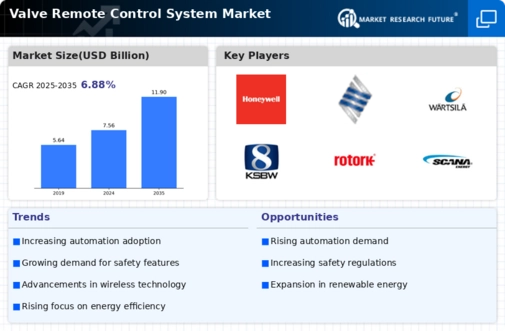
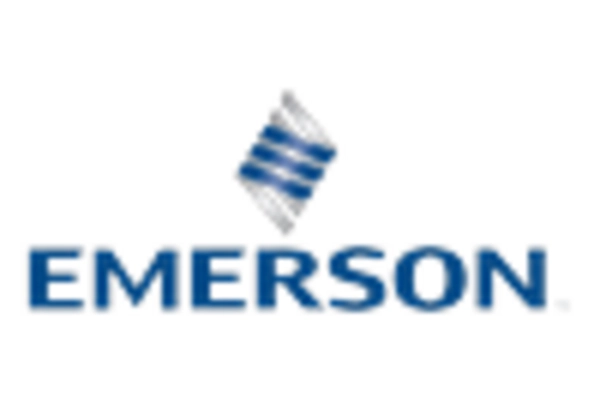
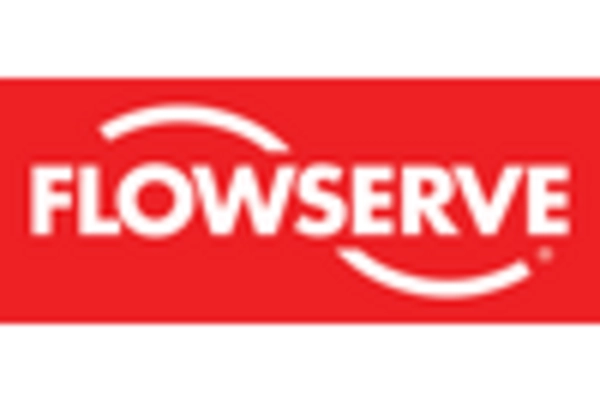

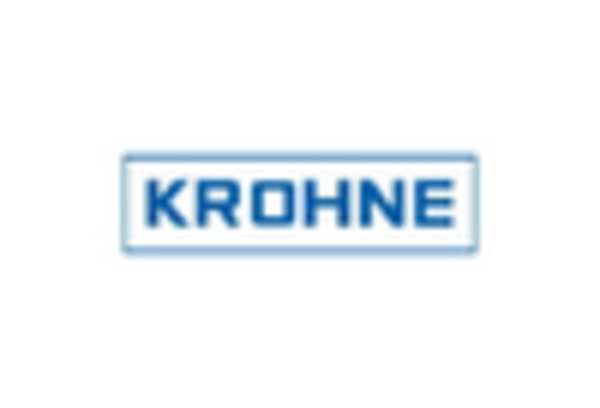
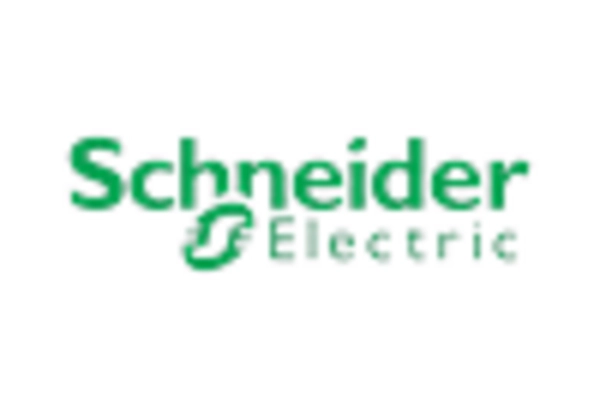
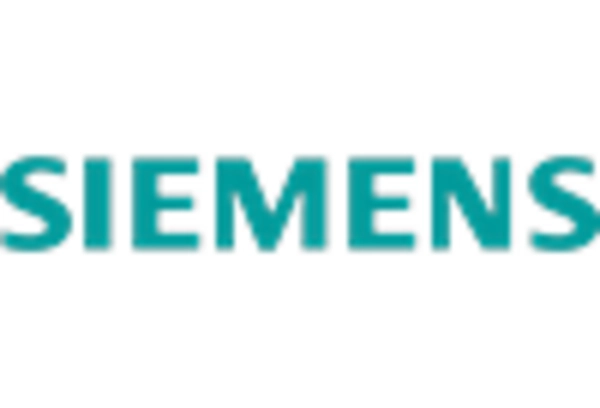









Leave a Comment